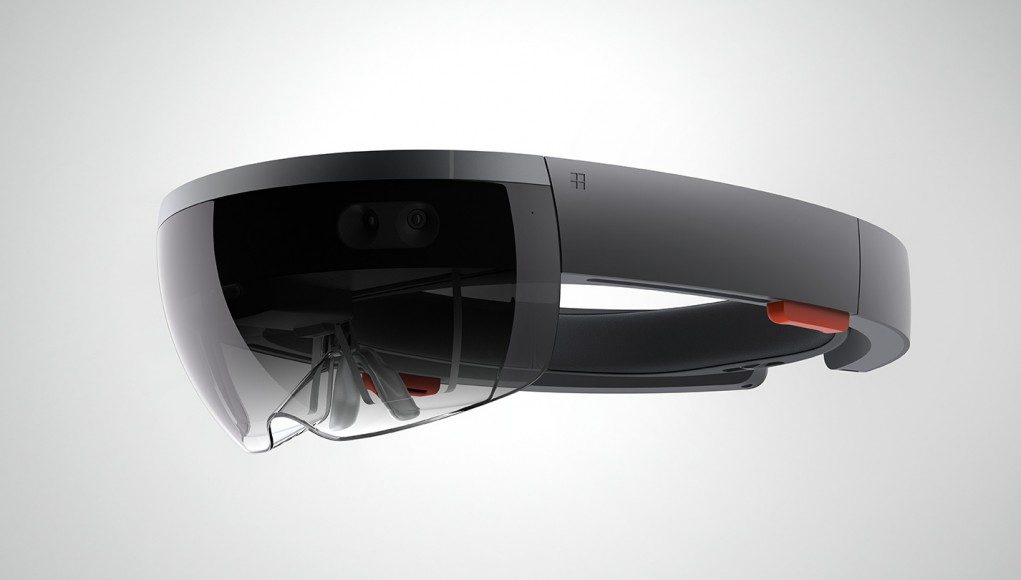For a category-defining first-gen device introduced in early 2015, HoloLens has had a remarkably long lifespan. But it increasingly seems like 2019 could be the year that HoloLens 2 is revealed as official channels have now been weeks without stock of the original headset.
Microsoft initially launched HoloLens as a dev kit in early 2016 and later that year made it available in a ‘Commercial Suite’ edition that was positioned toward enterprises. Through 2017 and 2018 the company steadily grew the headset’s distribution channels and options: opening official third-party resales and rentals, expanding regional availability, offering a certified hard hat option for the headset, and launching first-party software tools for enterprise visualization and remote help. And to top it all off, Microsoft recently landed a $480 million defense contract to provide the US Army with AR headsets.
With so much momentum, it’s surprising to see that both the HoloLens Commercial Suite and Development Edition have been out of stock from Microsoft for what appears to be several weeks now. We reached out to the company to ask when stock is expected to return, but the company didn’t offer any timeline.
“Microsoft HoloLens Development Edition and Commercial Suite are out of stock and unavailable from Microsoft Stores. For customers looking to purchase HoloLens, please visit HoloLens.com for a listing of HoloLens resellers as well as rental options,” a Microsoft spokesperson told Road to VR.
We looked into the official HoloLens reseller for the US and Canada, Insight, but found that HoloLens is out of stock there too.
Three potential explanations seem most likely: 1) A major production disruption has stalled HoloLens supply, 2) Microsoft has had to divert all production to fulfill its new contract to supply AR headsets to the US Army, or 3) HoloLens 2 is near at hand.
#1 & #2 seem less likely, however, as one would think that Microsoft would readily offer up an explanation to assure enterprise customers that HoloLens will eventually be back in stock and they can resume AR operations.
With HoloLens now more than 2.5 years old, and the launch of its first real competitor—Magic Leap—earlier this year, #3 is starting to look increasingly plausible, especially considering how long HoloLens 2 seems to have been in development.
It was back in July of 2017 that Microsoft quietly said it was working on a new version of the HoloLens ‘HPU’ (holographic processing unit, the nerve center for the headset’s many external sensors), and that the newer chip was being “designed to work in the next version of HoloLens.” Earlier this year the company affirmed ongoing development of the headset (despite some rumors of discontinuation), and as recently as May confirmed that the new ‘Project Kinect for Azure’ module would be the sensor package in the next HoloLens.
It also seems unlikely that Microsoft would have pitched its first-gen HoloLens technology for the US Army contract—which aims to deliver 100,000 Microsoft-built AR headsets—especially considering that Magic Leap was also vying for the contract with its newer tech.
While 2019 seems increasingly likely for a HoloLens 2 introduction, there’s still some big questions up in the air about what exactly is next for the headset.
Knowing that Kinect for Azure will be on board clues us in to some of the headset’s sensing capabilities. Rumors are swirling that the next HoloLens could ditch its current Intel CPU in favor of a Qualcomm Snapdragon chip, which would dovetail nicely with Microsoft’s increasing emphasis on ARM support for Windows 10. With an ARM chip and 4G connectivity rumored to be on board the next version, the use-cases for HoloLens could vastly expand.
Microsoft was remarkably quiet about the original HoloLens before its reveal, and the headset turned out to be well ahead of its time. Though a few concrete details have emerged for HoloLens 2, Microsoft has been similarly quiet this time around; we still know next to nothing about key factors like field of view, form-factor, size & weight, or even cost. Can the company make another leap forward with the next version of HoloLens? 2019 seems like the year we’ll find out.







